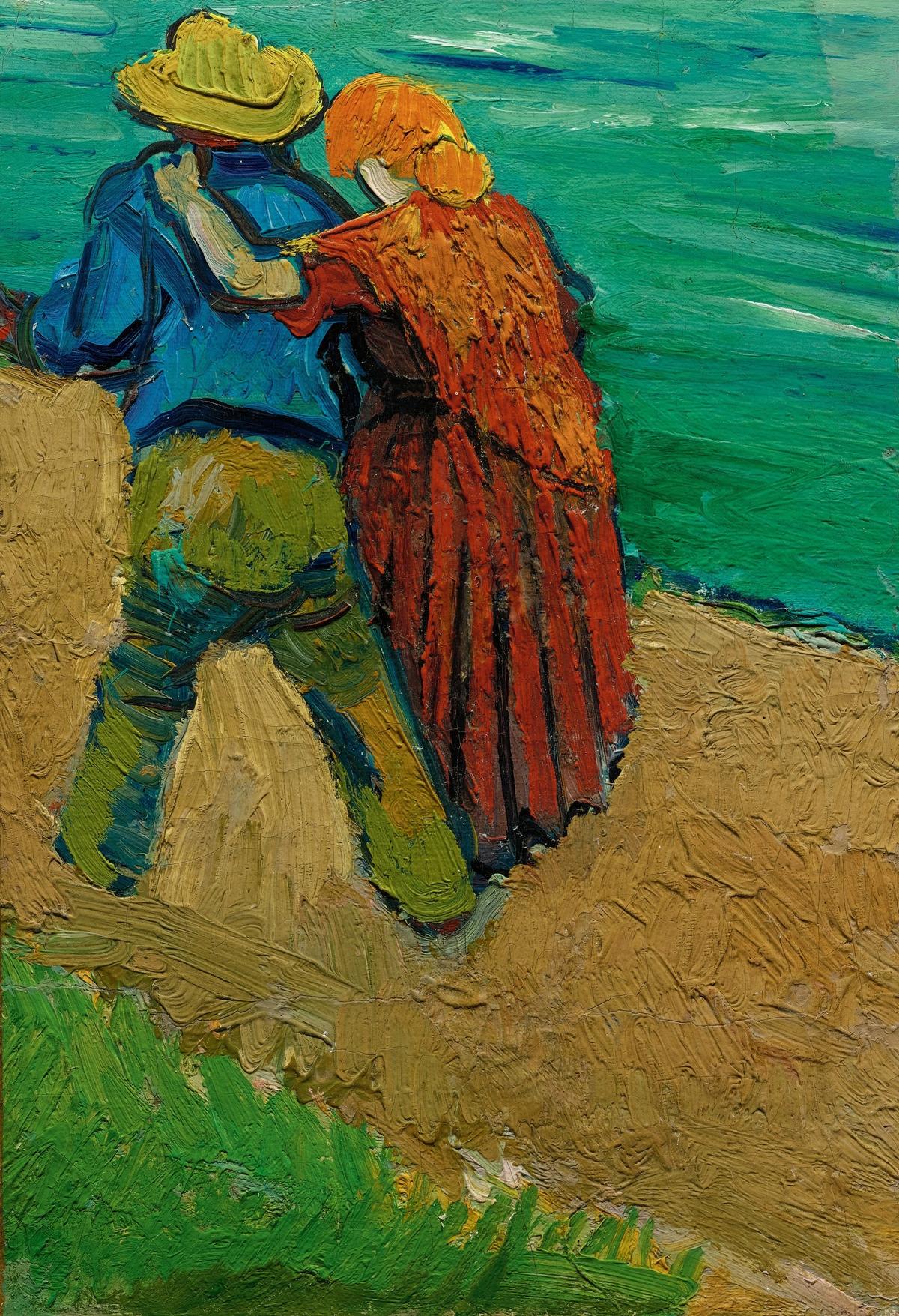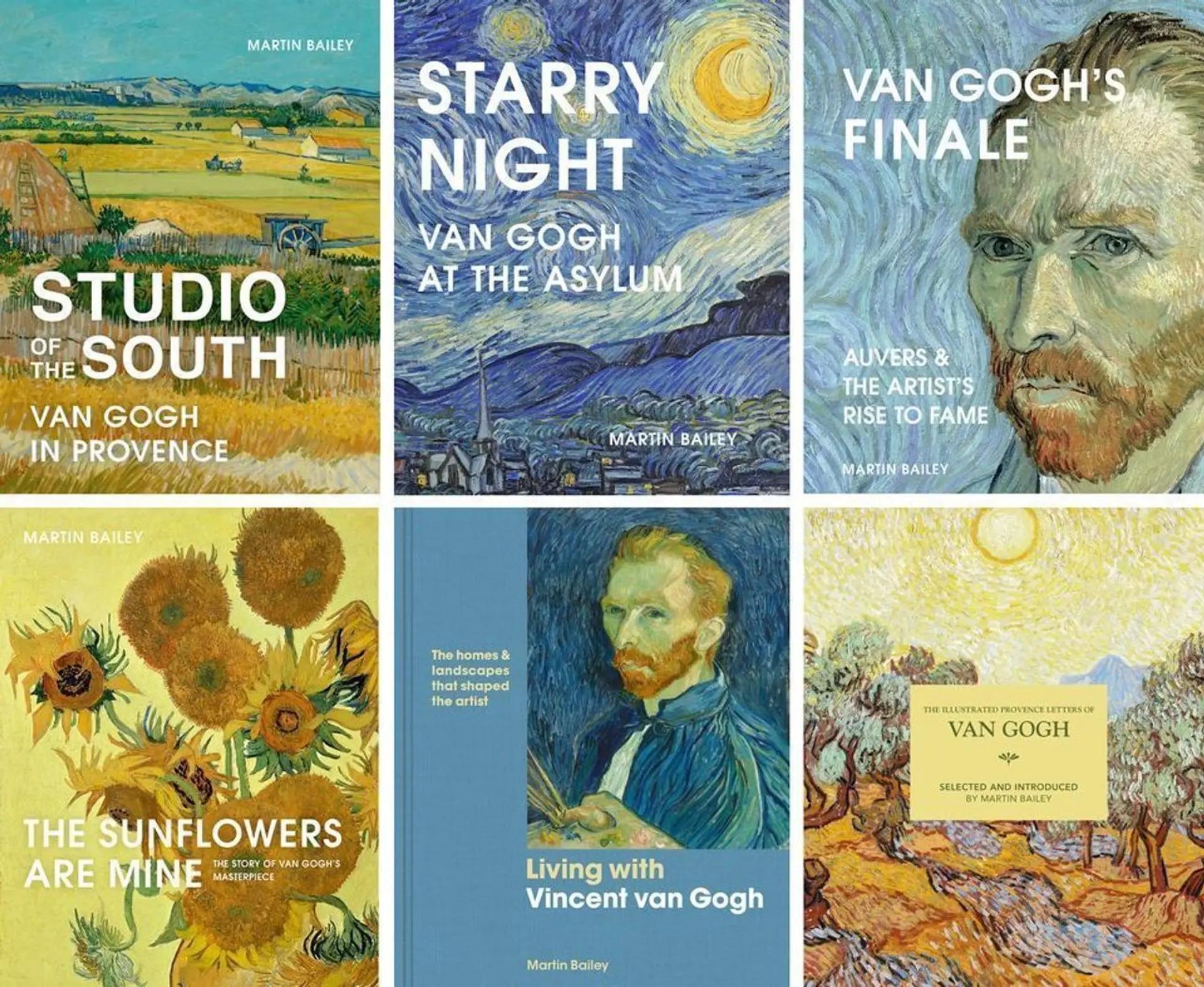Van Gogh’s A Pair of Lovers is coming up for sale at Sotheby’s in London on 2 March, with an estimate of £7m-£10m. The small painting, just under 13in high, is the most important part of a much larger work he abandoned.
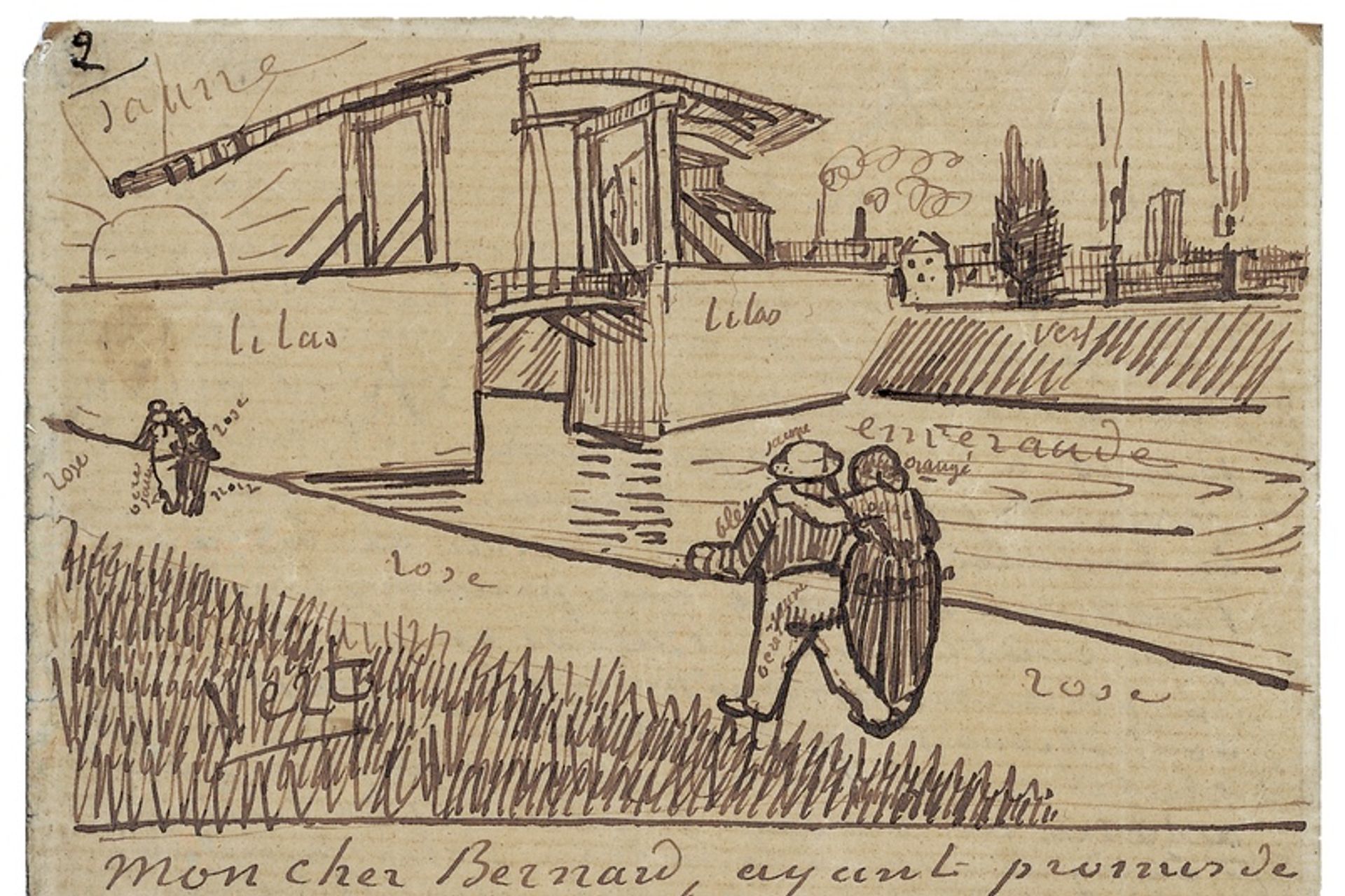
A sketch in Van Gogh’s letter to Emile Bernard, 18 March 1888 Credit: Thaw Collection (2007, MA 6441.2), Morgan Library & Museum, New York
Vincent made a sketch of the full picture in a letter to his artist friend Emile Bernard on 18 March 1888. The original painting depicted a landscape view of the canal which runs between Arles and the Mediterranean, with a large sun sinking on the horizon.
Dissatisfied with the full painting, Van Gogh destroyed most of it a day or so later. All he kept was a fragment of A Pair of Lovers, the section with two lovers on the towpath. The woman's arm rests protectively on the man’s shoulders, as she leans lovingly towards him.
The full landscape, as sketched in the letter, showed a view of the Langlois drawbridge, built in the 1830s on the southern outskirts of Arles (it was sometimes called l’Anglais, or the English, bridge). In the background, on the right side, are the church towers and smoking chimneys of the town.
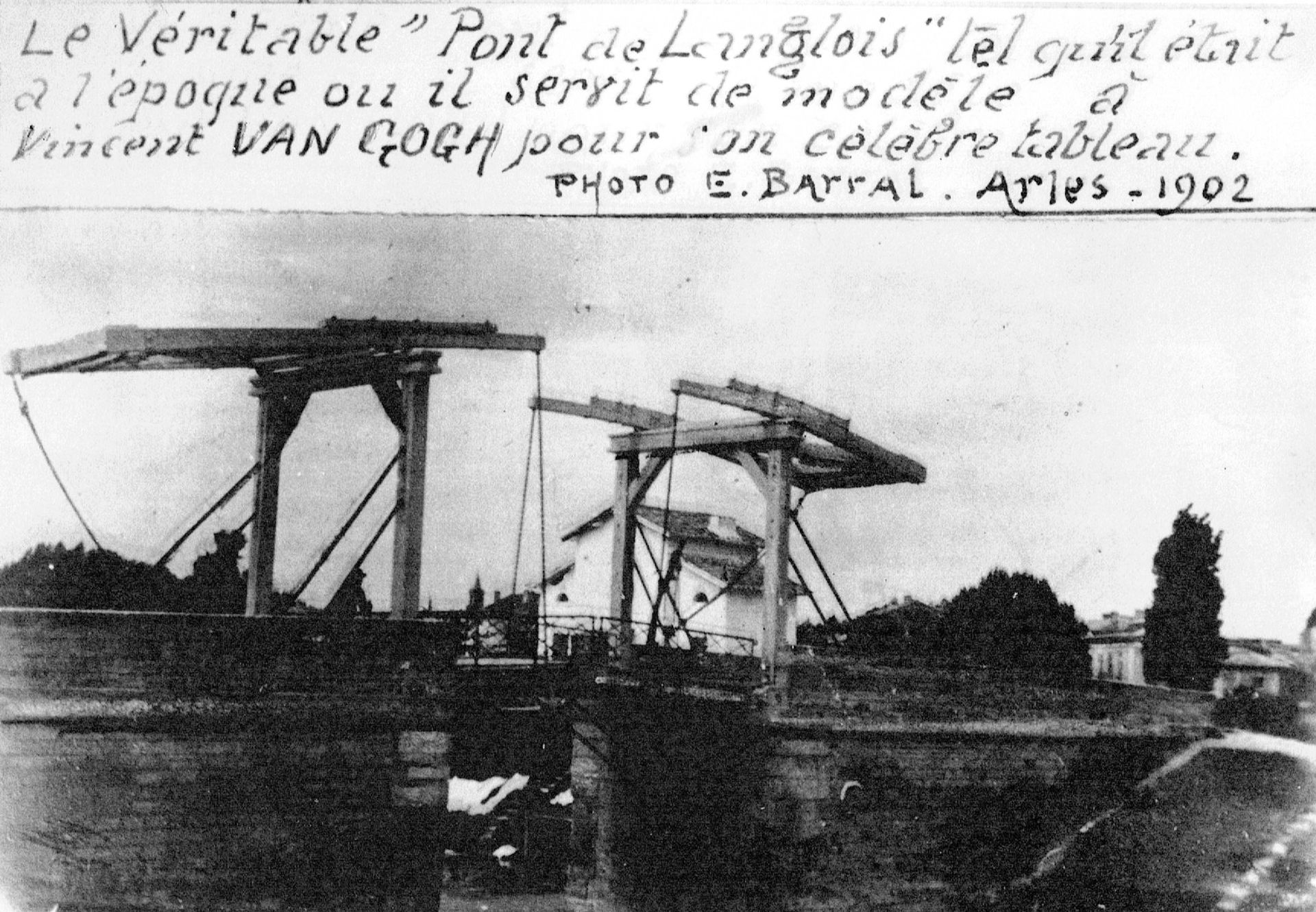
Photograph of the Langlois Bridge by E. Barral (1902)
The Langlois Bridge was a favourite motif for Van Gogh, partly because it reminded him of Dutch-style drawbridges. Altogether he painted four other landscapes of the scene. In a little known quotation, the poet Alfred Massebieau recalled in 1893 that five years earlier he had seen Van Gogh painting the “pont de l’Anglais”.
Van Gogh added a description of the landscape for Bernard: “At the top of this letter I’m sending you a little croquis [sketch] of a study that’s preoccupying me… sailors coming back with their sweethearts towards the town, which projects the strange silhouette of its drawbridge against a huge yellow sun.”
But after writing to Bernard, the weather deteriorated and Van Gogh abandoned the idea of completing the painting outdoors. Instead he set out to finish it in his studio.
As Vincent explained to his brother Theo: “Rain and wind these past few days, I’ve worked at home on the study… My aim was to give it colours like stained glass, and a design of solid outlines.” The palette for the entwined couple demonstrates his love of complementary colours—the man’s blue jacket with his companion’s orange headgear and the woman’s red clothing with the emerald green of the water.
A few days later Vincent sent an update to Theo: “As the bad weather prevented me from working on the spot, I completely worked this study to death trying to finish it at home.” Vincent much preferred to work in front of his motif, rather than from his imagination.
Very soon after abandoning the overworked landscape, Vincent began afresh, setting up his easel on the towpath: “I started the same subject again immediately afterwards on another canvas, but as the weather was quite different, in a grey palette and without figures.” This work, The Langlois Bridge, is 24in by 29in—the same size as the full abandoned picture.
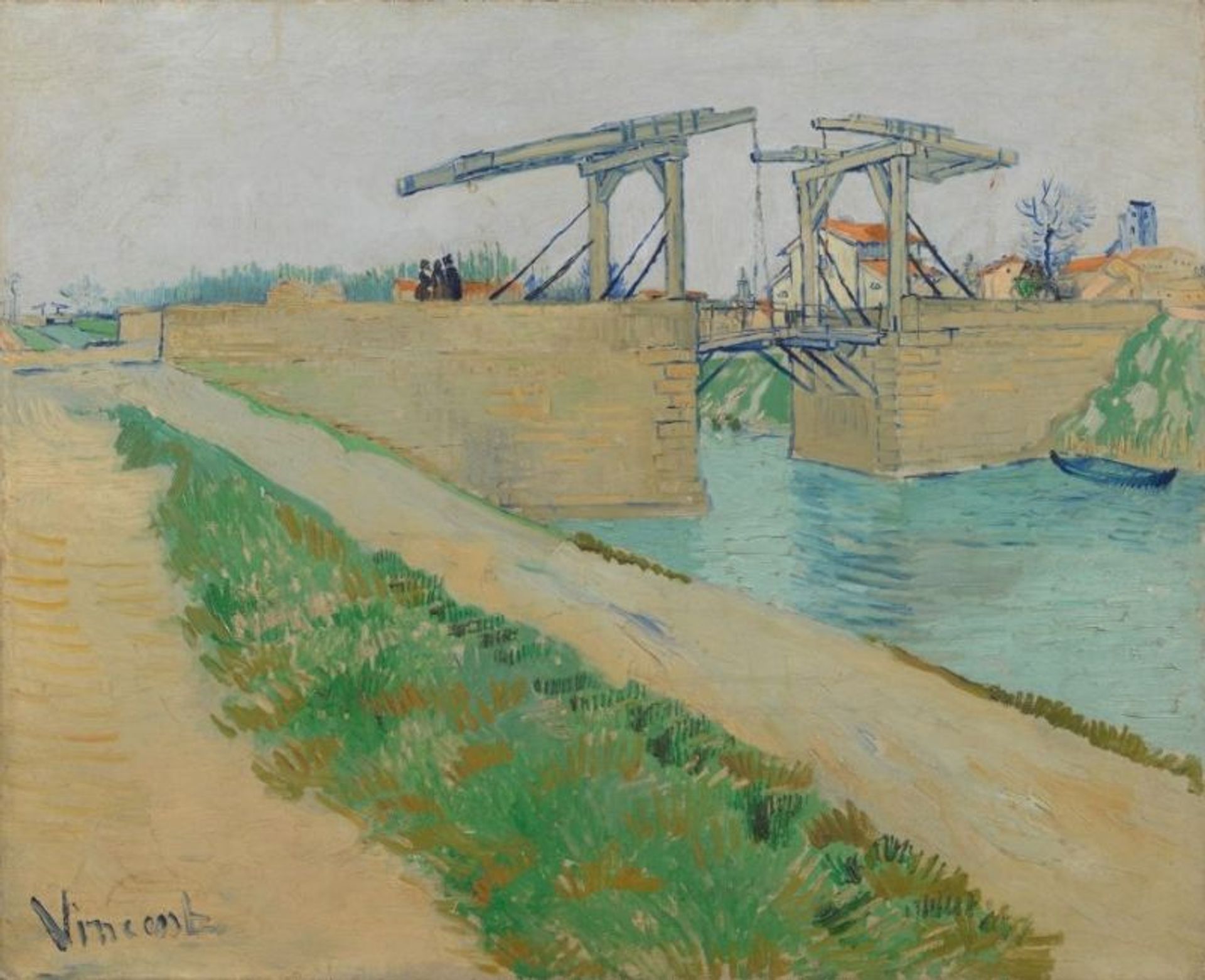
Van Gogh’s The Langlois Bridge (March 1888) Credit: Van Gogh Museum, Amsterdam (Vincent van Gogh Foundation)
Meanwhile, Van Gogh had cut out a small rectangle with the figures of the two lovers, representing about a sixth of the abandoned canvas—and threw away the rest. He kept the fragment, planning to use it as a study for figures in another picture.
How the fragment survived remains a mystery. There is some evidence that it was saved by his friends Marie and Joseph Ginoux, who ran the Café de la Gare near the Yellow House in Arles.
The first firmly recorded owner was the Parisian playwright Henri Bernstein, who sold the fragment in 1910. It was at this point that it was called Eglogue en Provence (eglogue, or eclogue in English, is a classical term for a pastoral poem). This was a surprising title because the factory chimneys in the abandoned section suggest that the towpath was hardly a rural idyll.
Since the late 20th century the fragment has already been sold three times by Sotheby’s. It is revealing to track the prices: £280,000 in 1986, £2.9m in 2001 and $7.1m (£4.7m) in 2013. Sotheby’s records the present anonymous seller as a “distinguished” Japanese collector, estimating that the work should now fetch £7m-£10m.
Although the full landscape was destroyed, as early as 1906 a Swiss artist was inspired to try to reconstruct the full painting from Van Gogh’s sketch, which included his colour notations.
Giovanni Giacometti, the father of the famed sculptor Alberto Giacometti, set out to visualise the lost Langlois Bridge landscape from a 1906 reproduction of the letter sketch in an early book on Van Gogh by the German art historian Julius Meier-Graefe.
Interestingly, Giovanni Giacometti’s imagined reconstruction looks little like a Van Gogh, neither in brushwork nor colouration. But in 1906 there were virtually no colour reproductions of Van Gogh paintings and few had been exhibited in Switzerland.
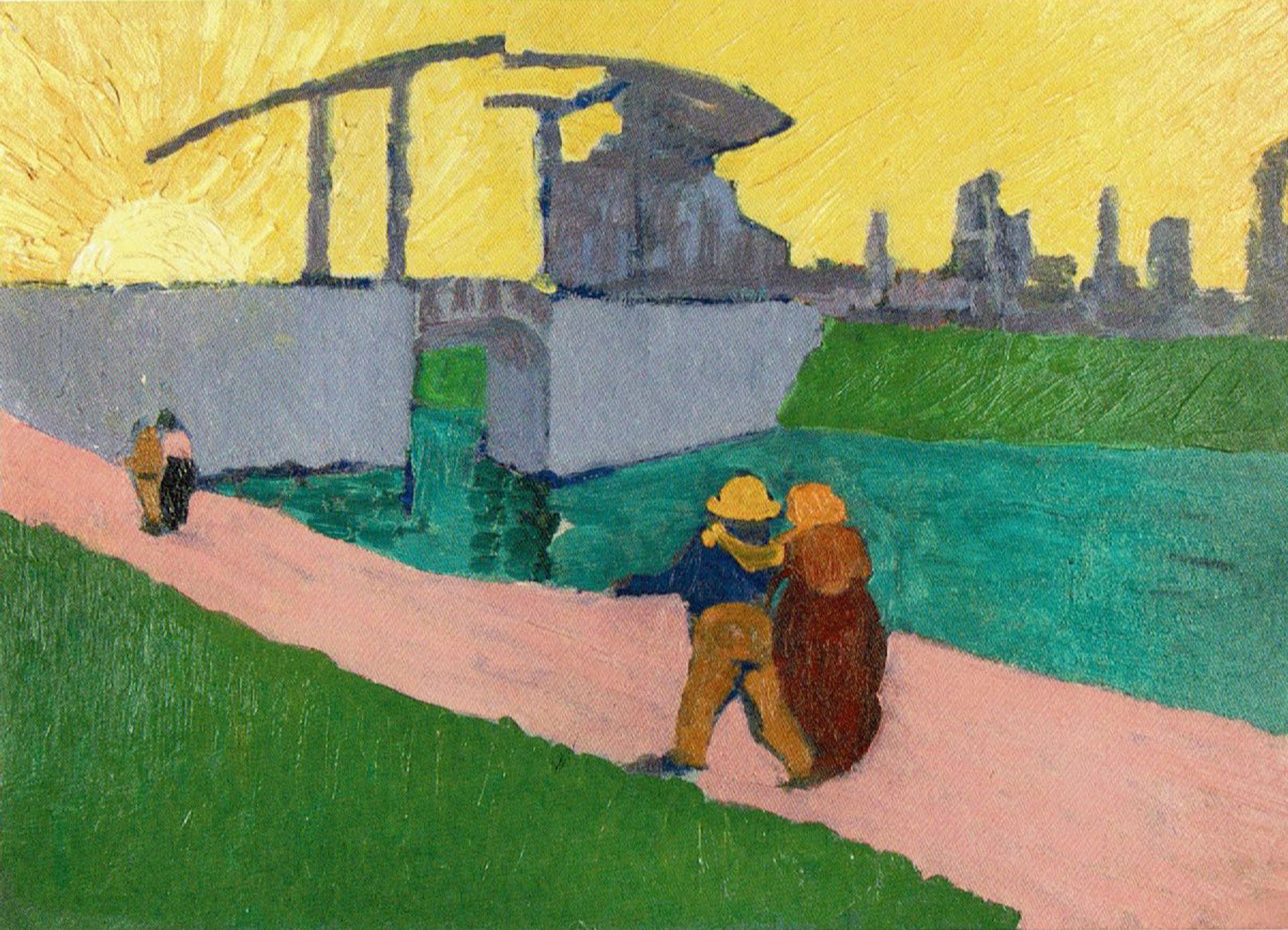
Giovanni Giacometti’s version after Van Gogh’s lost landscape of the Langlois Bridge (1906-07) Credit: private collection
But in considering Van Gogh’s surviving fragment, which is coming up for sale, there is the fascinating question of whether the behatted male figure could represent the artist?
Van Gogh wears a straw hat in half a dozen of his self-portraits (two are now on display in the Courtauld Gallery’s current exhibition). More to the point, in A Pair of Lovers the man is dressed similarly to the figure in The Artist on the Road to Tarascon, a painting which was probably destroyed in a salt mine at the end of the Second World War.
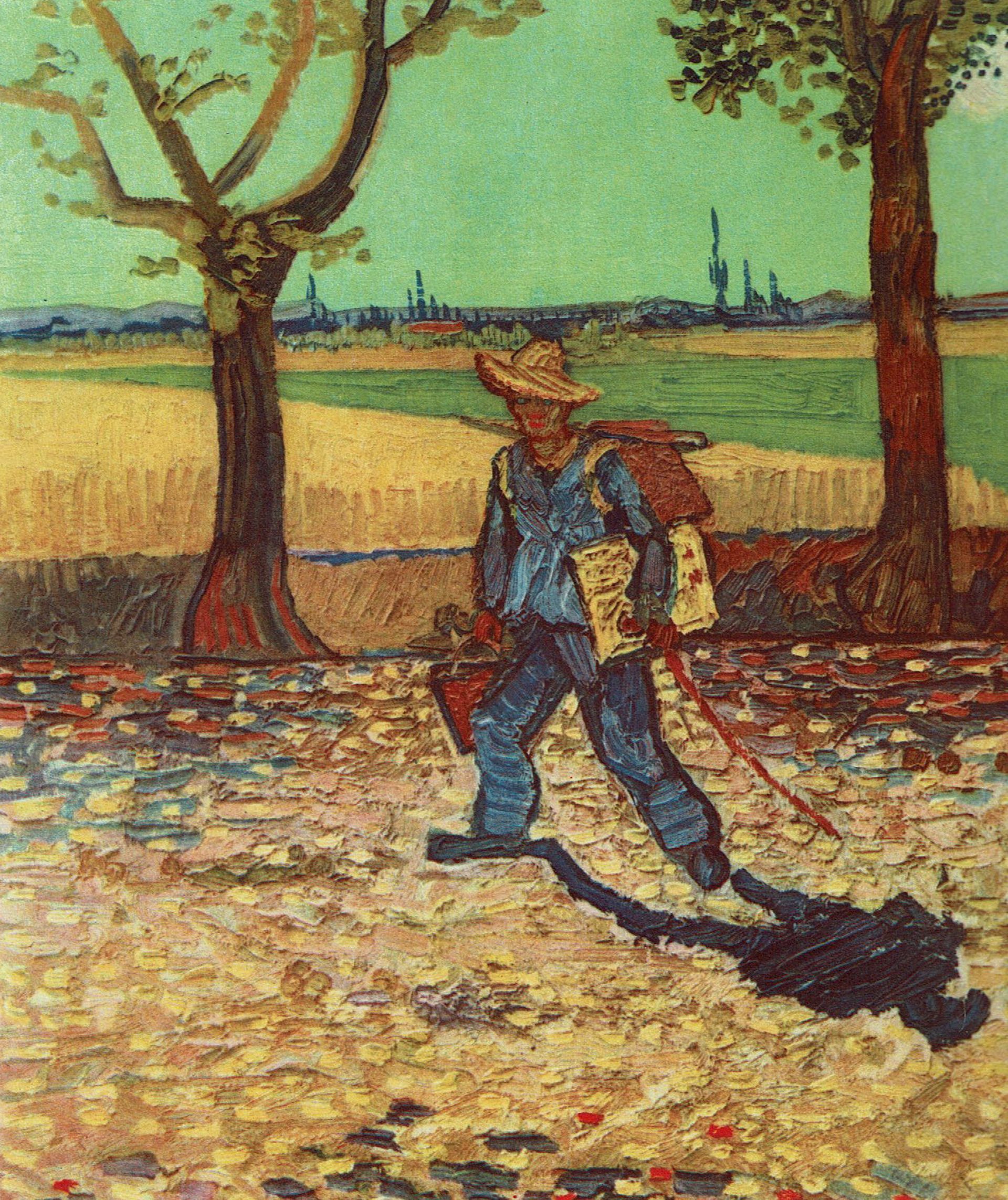
Vincent van Gogh’s The Artist on the Road to Tarascon (1888) Credit: Kulturhistorisches Museum, Magdeburg
Vincent painted the dismembered landscape of the canal scene just one month after his arrival in Arles. At that stage he does not seem to have made many friends in town, let alone met eligible young ladies. Was the lonely artist dreaming of finding a sweetheart to stroll with along the canal?
A Pair of Lovers will be viewable at Sotheby’s Taipei on 12-13 February and from 22 February-2 March at Sotheby’s London.


